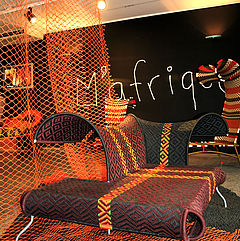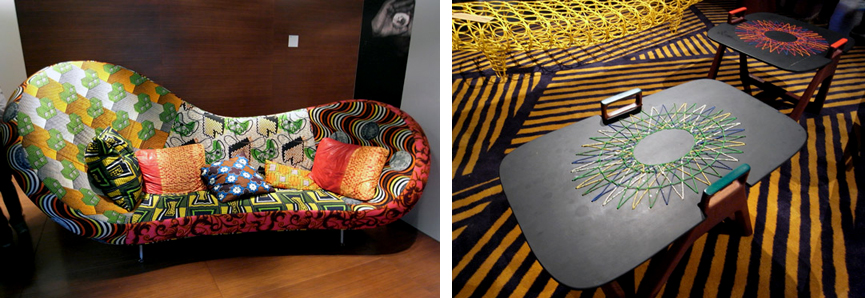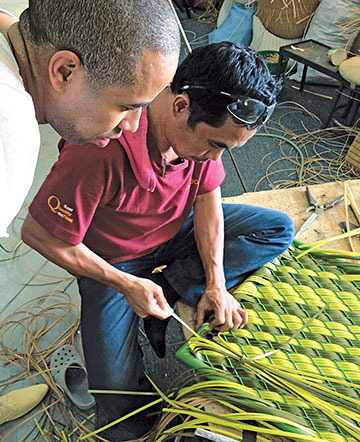
Stephen Burks
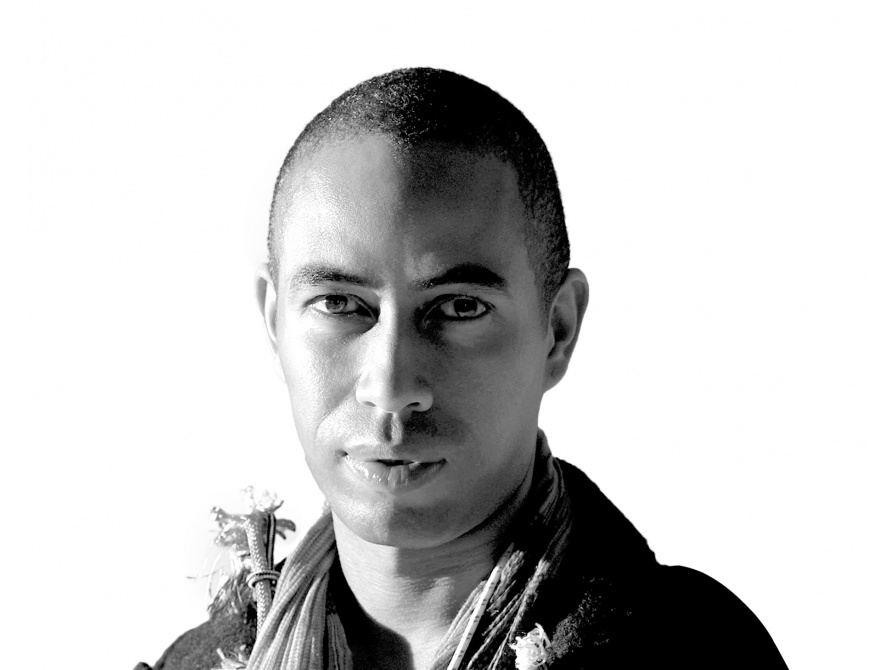
For over a decade, Stephen Burks has dedicated his work to building a bridge between authentic craft traditions, industrial manufacturing, and contemporary design.
Since 2005, Burks has consulted with nonprofits including Aid to Artisans, the Clinton Global Initiative, Design Network Africa, Artesanias de Colombia and the Nature Conservancy, uniting the artisan, the designer, and global brands in a triangle of immersive development.
With his New York–based studio, Stephen Burks Man Made, Burks has produced innovative products, furniture, lighting, and exhibitions for a range of international clients including B&B Italia, Boffi, Cappellini, Dedar, Dedon, Harry Winston, Missoni, Moroso, Parachilna, Roche Bobois and Swarovski. He is the first African-American industrial designer to ever collaborate with these companies.
Stephen has worked as a consultant collaborating with artisans around the world in Australia, India, Mexico, Peru, South Africa and Senegal building a bridge from authentic developing world artisanry to first world distribution. In 2006, in Peru, he began work on his own television documentary project, entitled Made On Earth, and worked with the Sundance Channel to produce the first Made On Earth television pilot currently being considered for production by a leading American television studio.
In 2007, he designed the Tatu wire table collection produced by hand in South Africa for Artecnica’s Design With Conscience program. In 2008, he designed Cappellini’s first ever eco-conscious collection entitled Cappellini Love also artisanally produced in South Africa with the small community collective in the township of Nelson Mandela’s birth, Mandela Mosaics. In 2009, Stephen was commissioned to coordinate, art direct and design the M’Afrique exhibition for Moroso in Milan at the Moroso showroom on via Pontaccio.
As part of the commission, Stephen traveled to Dakar, Senegal, with his documentary photographer & videographer to document the process of production of the hand-made Moroso M’Afrique outdoor furniture collection. He also purchased Dutch wax cloth fabrics in the markets of Dakar, which were used to patchwork several pieces of the existing Moroso furniture collection.
Stephen’s work has been featured in numerous design publications and journals. His projects have been exhibited around the world at design fairs, galleries and museums. He studied architecture at the Illinois Institute of Technology and Product Design at IIT’S Institute of Design, as well as attending Columbia University’s Graduate School of Architecture.
Wearing a dark blue Dries Van Noten suit and Converse x Missoni sneakers, Burks presents an alternative vision: He removes the seat cushion of a giant, $4,765 Ahnda wing chair, which he designed for the German furniture company Dedon. He points to its woven substructure, a cross-hatched maze that supports the chair’s circular base. “I knew I wanted this herringbone weave,” he says, running his fingers along blue, gray, and black cords. “I had a sense of what I wanted to do. But it couldn’t happen until I arrived at the factory.”
This design philosophy can best be described as wait and see. Burks comes up with a concept, then lets craftsmen around the world help shape the object’s final form—Foxconn it isn’t. “It’s about returning the hand to industry,” he says. “That space between making and industrializing creates more potential for innovation.”
Burks became the first African American to win the National Design Award for product design in 2015. He curated an exhibition at New York’s Museum of Arts and Design and was featured in a solo exhibition at the Studio Museum farther uptown in Harlem. In addition to Dedon, he’s worked with French furniture company Roche Bobois on his $14,840 European Traveler chair, Ligne Roset on the $545 Chantal table light (since discontinued), and Harry Winston on an alabaster jewelry box, a gift for the jeweler’s highest of high-end clients. His studio turns out $700 stools and $500 bowls. “He paved the way for the model of designer as entrepreneur,” says Constantin Boym, chairman of the industrial design department at Brooklyn’s Pratt Institute.
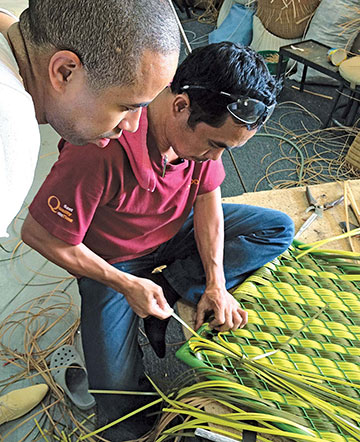
At this point, however, making a few very expensive products for a few very wealthy people isn’t satisfying. “We’re only catering to the rich,” Burks says. “I’m beginning to understand that I have to have a parallel project which tries to consider how this plays into the mass market.” The contours of that project are undefined: The annual revenue of Stephen Burks Man Made is less than $1 million, he says, so he’s looking for business partners to help him expand.
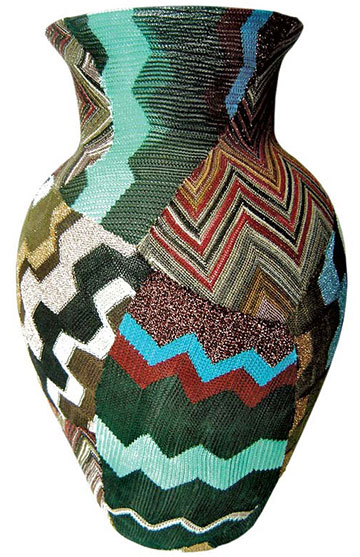
He’s positive he can apply the same methodology he uses in making objets d’art to making everyday objects. This includes “eyeglasses, watches, shoes—we’ve already done an underwear collection,” he says. “Just because you have a product you need to sell to 100,000 people doesn’t mean that all 100,000 have to be the same.” He picks up a square, black, plastic hard drive. “Companies are still making things like this. I mean, come on!”
Stephen Burks on Africa’s craft from Design Indaba on Vimeo.


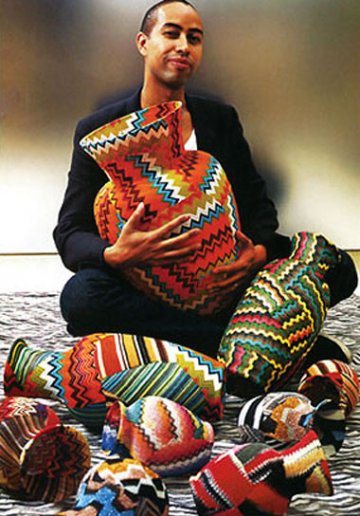
![[#Beginning of Shooting Data Section] Nikon D2X 2006/12/19 12:26:46.3 RAW (12-bit) Image Size: Large (4288 x 2848) Lens: 50mm F/1.4 D Focal Length: 50mm Exposure Mode: Manual Metering Mode: Multi-Pattern 1 sec - F/14 Exposure Comp.: 0 EV Sensitivity: ISO 100 Optimize Image: White Balance: Incandescent AF Mode: AF-S Flash Sync Mode: Not Attached Color Mode: Mode I (Adobe RGB) Tone Comp.: Normal Hue Adjustment: 0° Saturation: Normal Sharpening: Normal Image Comment: Long Exposure NR: On High ISO NR: Off [#End of Shooting Data Section]](http://pragmaticobotsunite2018.com/wp-content/uploads/2016/04/tatu_coffe-table-side-tables-copia.jpg)
